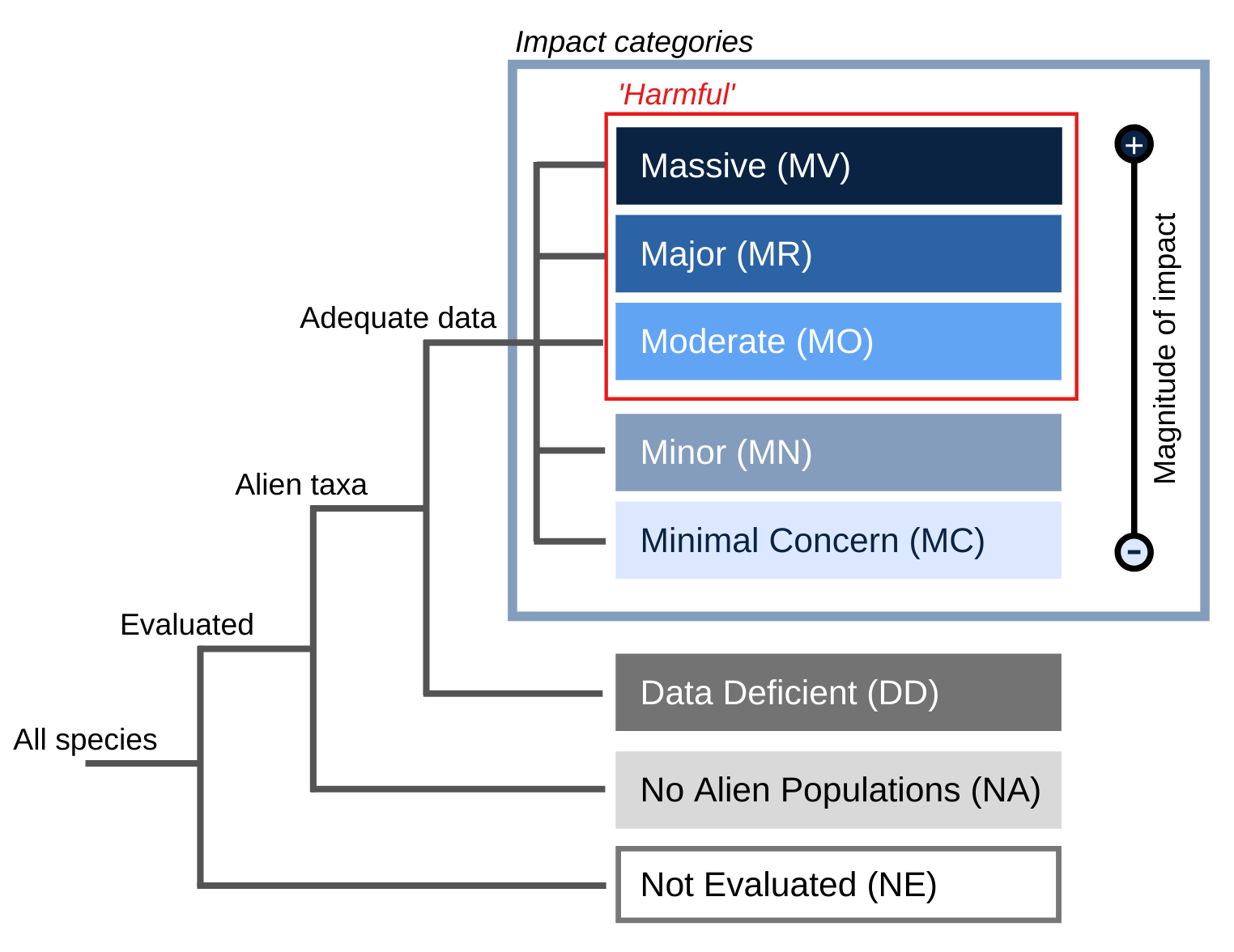- General
- Distribution
- Impact
- Management
- Bibliography
- Contact
Mimosa pudica , L. var. tetranda (Willd.) DC.
Mimosa unijuga , Duch. and Walp.
Mimosa pudica , L. var. unijuga (Duch. and Walp.) Griseb
M. pudica has been identified as having potential for phytoremediation of arsenic polluted areas in Thailand (Visoottiviseth et al., 2002).
In China, the flowering season from March to October, with fructescence from May to November (CSIS, undated).
M. pudica is also a popular ornamental plant, as its leaves will fold up when stimulated by touch, heat or wind (Whatcom Seed Company, 2006; GRIN, 2006), and is also used for soil improvement (GRIN, 2006).
M. Pudica is shade intolerant and does not compete with tall vegetation or grow under forest canopies. The species’ roots produce carbon disulfide, which selectively inhibits colonization of the rhizosphere by mycorrhizal and pathogenic fungi (Feng et al., 1998; in Francis, undated). M. Pudica is primarily found on soils with low nutrient concentrations, as it is probably outcompeted on richer soils (Magda et al., 2006). It grows on most welldrained soils, even scalped or eroded subsoils. It requires disturbed soils to establish itself. Repeated burning may encourage its spread in pastures (Siregar et al., 1990; in Francis, undated).
Principal source: Pacific Island Ecosystems at Risk. 2005. Mimosa pudica Species Information.
Francis, J.K. Undated. Sensitive plant fact sheet.
Compiler: IUCN SSC Invasive Species Specialist Group
Updates with support from the Overseas Territories Environmental Programme (OTEP) project XOT603, a joint project with the Cayman Islands Government - Department of Environment
Review:
Publication date: 2010-10-04
Recommended citation: Global Invasive Species Database (2025) Species profile: Mimosa pudica. Downloaded from http://www.iucngisd.org/gisd/speciesname/Mimosa+pudica on 07-12-2025.
A Risk assessment of Mimosa pudica for Florida was prepared by Gordon et al 2008. The result is a score of 17 and a recommendation of rejection for import into Florida.
Physical: Hand weeding is difficult due to the presence of thorns and a woody root (Wagner, 1983; in PIER, 2005). Repeated burning may in fact encourage the spread of M. pudica in pastures (Magda et al., 2006).
Chemical: It is susceptible to several herbicides, including dicamba, glyphosate, picloram and triclopyr (Parsons and Cuthbertson, 1992). Very sensitive to picloram (0.25 lb/acre), sensitive to triclopyr. Dicamba and 2,4-D poor. Soil applied tebuthiuron effective (Motooka et al., 2002) (all from PIER, 2005).
In pasture situations, dicamba and fluroxypyr can be used to control M. pudica. Thorough wetting of all leaf surfaces is essential. If plants are disturbed before spraying, the leaves will fold up and the herbicide will be ineffective. Ensure all spraying is done with forward booms or ahead of operators with knapsack sprayers (Land Protection, 2006).
Biological: See Waterhouse and Norris (1987) and Waterhouse (1994) for information on prospective biological control agents (PIER, 2005).
Coir dust, a waste from coconut processing, can be used as a mulch in pineapple crops to suppress M. pudica and other weeds (Van Mele et al., 1996).
Sheep grazing is reported to control the dominance of M. pudica in pasture (Magda et al., 2006; Francis, undated).







